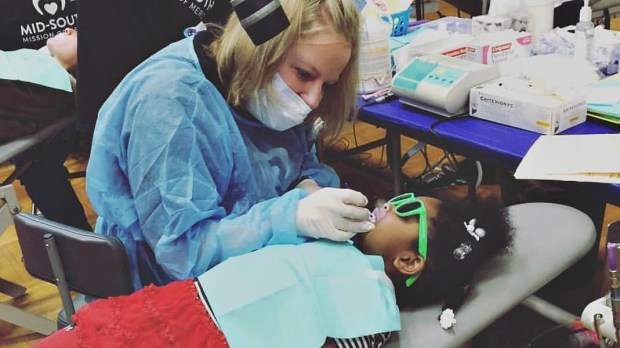While well-off Americans spend $1 billion a year to whiten their teeth, millions cannot afford basic dentistry and must rely on charity clinics and emergency rooms for care.
Mission of Mercy, a non-profit organization, is one of these charities that is stepping in to fill a great need – they offer free health care and dental care to the uninsured and those who “fall through the cracks of our healthcare system.”
According to Mission of Mercy, over 100 million people are without dental insurance and the patients the charity serves aren’t necessarily poor or homeless.
“The people out there in need include the average person mingling and socializing among us. They are friends, coworkers, people we interact with on a daily basis,” reads a mission statement on the Eastern Shore Mission of Mercy’s website.
Their mobile dentistry clinic was the subject of a must-read front-page feature in Sunday’s Washington Post (“The painful truth about teeth”) that highlighted the stark difference in the dental care received by the rich and the poor.
The article described the scene at a recent free clinic organized by the Mission of Mercy in Salisbury, Maryland. Hundreds of people, many of whom had lived for years in great pain because of their neglected teeth, recently camped out overnight to get a spot at the clinic, which was held at the local convention center.
Licensed dentists and hygienists along with hundreds of volunteers donate their services to these free clinics, which are held in Arizona, Maryland, Pennsylvania and Texas.
The Post reported that at the Eastern Shore clinic, “Over two days, 116 dentists treated 1,165 patients, providing $1 million worth of fillings and other care, according to the Mission of Mercy.”
Many of those who lined up to have teeth extracted or cavities filled were employed but didn’t have dental insurance or adequate coverage, according to the Post report.
Even for those whose employers offer health insurance, coverage is often capped at $1,500, a limit that has not kept pace with the rise in dental care costs. High insurance deductibles and the limited availability of dentists in lower income areas also contribute to the unaffordability of dental care, according to the report.
“It’s completely skewed. You have the fewest dentists where the need is greatest,” George Acs, director of the dental department at Chesapeake Health Care, told the Post.
Read the entire article here.

